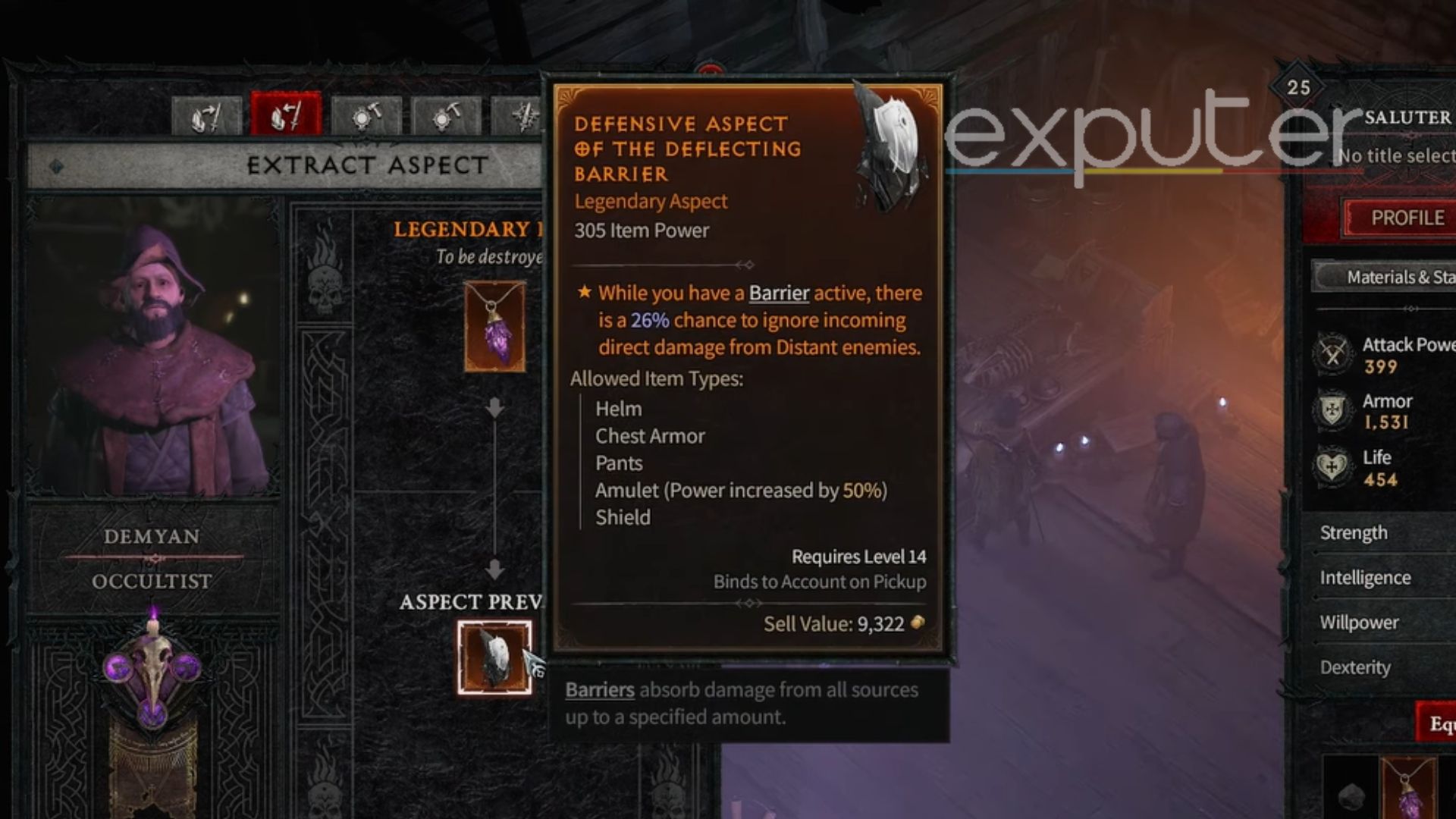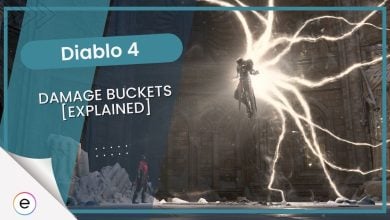Crafting has always remained a vital mechanic in the Diablo franchise as it allows them to craft various new items in the game. Diablo 4 introduces a brand new crafting system that is bound to make some players a bit confused. Since crafting is a vital mechanic in the franchise as a whole, one must know how to craft and about all the crafting materials in the game.
- Four vendors/artisans in Diablo 4: Blacksmith (weapons and armor), Alchemist (potions and elixirs), Occultist (enhancing stats and character customization), Jeweler (upgrading and socketing jewels).
- Blacksmith utilizes Ores to craft and upgrade weapons.
- Alchemist uses Monster Parts for potion and elixir upgrades.
- Herbs are employed by the player with the Alchemist for crafting elixirs, incense, and potions.
- Skins are utilized by the Blacksmith for upgrading armor.
- Four types of crafting materials: Ores, Monster Parts, Herbs, and Skins.
Learn in-depth about crafting in Diablo 4 by watching our video, or you can continue reading the guide.

How To Craft In Diablo 4
The game introduces a brand new system for crafting.
Instead of being able to visit just one specific location and having the ability to craft every type of material, that ability has been divided between 4 different vendors/artisans which I have listed below:
- The Blacksmith
- The Alchemist
- The Occultist
- The Jeweler
As the name suggests, each of these vendors specializes in their field, and players will be able to craft their required items/materials after visiting the appropriate artisan. Each of these artisans is available in every Capital City in Diablo 4.
The Blacksmith

Here, I have summarized everything that the Blacksmith can do in Diablo 4:
- The Blacksmith can aid the player in crafting their weapons and armor or even upgrade them.
- In terms of upgrades, to what extent a weapon can be upgraded is dependent on its rarity.
- If players have some old armor lying around, then they can take it to the Blacksmith to dismantle/salvage it and obtain some crafting materials in the process.
- In case you have any jewels attached to the weapon that you have dismantled, then those jewels will be automatically returned to your inventory.
- The Blacksmith can be unlocked fairly early in the game.
The Alchemist

- Players can visit the Alchemist to upgrade their potions, such as the health potion.
- These potions can grant the players various buffs or advantages in the game and can get them out of a tough spot when used correctly.
The Occultist

- The Occultist provides the service to enhance your armor, which means that it gives you the option to modify the stats of your armor and excel in a specific category.
- The Occultist also can craft Sigils occasionally, which are required if you wish to imprint Legendary Aspects on your gear.
- Sigils are also required if you wish to access the Nightmare Dungeons and customize your character’s powers.
The Jeweler

Below, I have all the services that this vendor provides:
- The Jeweler can upgrade your jewels by increasing the amount of resistance or buffs that the specific jewel offers.
- Players can also visit this vendor to craft items such as Rings and Amulets.
- In case you wish to socket or remove your gems from your armor, then that can also be done by visiting the Jeweler.
Crafting Materials
There are currently 17 different crafting materials in the game. These crafting materials are further divided into four categories.
- Ores
- Monster Parts
- Herbs
- Skins
One interesting thing I would like to mention is that these crafting materials do not consume any inventory storage so you can pick these materials up to your heart’s content while not worrying about running out of inventory storage.
Ores
Ores are mostly used by blacksmiths to craft or upgrade weapons and armor. They are mostly obtained after dismantling/salvaging materials at the blacksmith. Players can also obtain ores from veins that can be found in basically every region of Sanctuary.
- Iron Chunk:
- Common ore in Diablo 4.
- Primarily used for upgrading weapons and jewelry.
- Found on veins throughout the game and obtained by dismantling items at the blacksmith.
- Silver Ore:
- Magic tier ore.
- Used for upgrading weapons and jewelry to a higher level.
- Also utilized in crafting specific equipment.
- Obtained from veins or by dismantling certain armor or weapons at the blacksmith.
- Scattered Prism:
- Rare tier ore with a unique purpose.
- Not used for crafting/upgrading; instead, it adds sockets to gear, allowing for gem equipping.
- Found on large bodies, not in veins.
- Obtained by defeating world bosses, with a guide available for troubleshooting if bosses aren’t spawning.
Monster Parts
The Monster Parts are used to upgrade potions or elixirs. Needless to say, players can obtain monster parts after slaying different monsters, and you will get specific types of monster parts based on the type of monster you kill.
- Crushed Beast Bones:
- Used by alchemists to enhance physical properties.
- Obtained by defeating animals, werecreatures, and beasts.
- Used for upgrading and crafting potions like the Light Healing Potion.
- Demon’s Heart:
- Obtained from demons.
- Used in crafting potions like Moderate Healing Potion and Superior Healing Potion.
- Grave Dust:
- Used in necromantic alchemies.
- Found on undead bodies, bones, or cerements.
- Used to upgrade and unlock potions like Greater Healing Potion and Superior Healing Potion.
- Paletongue:
- Obtained from evil humans.
- Used for upgrading and unlocking potions, including the Strong Healing Potion.
- Carries lore associated with the lies of black-hearted humans.
Herbs
Based on my experience, players can use herbs to craft items such as Incense, elixirs, and potions at the Alchemist. Herbs are found throughout the world of Diablo 4 in the most random of places.
- Biteberry:
- Hard, bitter berry found in Fractured Peaks.
- Used to upgrade and unlock health potions and elixirs like Weak Iron Barb and Cold Resistance.
- Gallowvine:
- Enhances elixirs and upgrades stronger potions like Strong Healing Potion.
- Found anywhere without a specific location.
- Used to unlock various potions and elixirs, including Moderate Healing Potion and Weak Iron Barb.
- Lifesbane:
- Prized herb with potent toxins found in Kehjistan.
- Used to unlock potions, elixirs, and incense-like Major Healing Potion and Weak Elixir of Fire Resistance.
- Angelbreath:
- Rare-tier herb for unlocking difficult-to-obtain potions like Major Healing Potion and Superior Healing Potion.
- No specific spawn location, so it is found anywhere in Diablo 4.
- Blightshade:
- Toxic herb found in Hawezar.
- Used to unlock items like Major Healing Potion, Superior Healing Potion, and Weak Elixir of Shadow Resistance.
- Howler Moss:
- Herb with vital and physical qualities found in Scosglen.
- Used in elixirs (Weak Third Eye, Weak Elixir of Poison Resistance) and potions like Superior Healing Potion.
- Reddamine:
- Magic-tier herb in Dry Steppes with stimulating properties.
- Used in crafting Weak Elixir of Lightning Resistance, Greater Healing Potion, and other consumables.
- Fiend Rose:
- Rare-tier, a toxic herb found only during Helltides.
- Used exclusively for high-tier potions like Major Healing Potion and Superior Healing Potion.
Skins
Just like in medieval times, skins of different wildlife are used to upgrade armor pieces, except here, the concept also applies to beasts. The two types of skins that are currently available, at least from what I’ve uncovered, are Rawhide and Superior Leather.
- Rawhide:
- Most common skin in Diablo 4.
- Used for upgrading armor at the Blacksmith.
- Obtained by killing random beasts or wildlife in the game.
- Superior Leather:
- Magic tier skin, and is tougher to obtain than Rawhide.
- Used for crafting/upgrading armor.
- Obtained by slaying various beasts and wildlife in the game.
Wrap Up
And that concludes my guide on how to craft in Diablo 4 and all the crafting materials in the game. Being an MMO, the never-ending grind of crafting is bound to keep you occupied for a long time; thus, knowing just how the crafting mechanic works in this game was paramount for having a more worthwhile experience.
In case this is your Diablo game, then do consider reading our beginner guide on this title, in which we will be covering all the different tips and tricks. Of course, having a pet to accompany you in the game can also elevate the experience; we have a How To Get Wolf Pet in Diablo 4 guide as well, in case you are interested.
Next:
- Diablo 4: BEST Barbarian Build
- Diablo 4: Best Sorceress Class Build
- Diablo 4: Best Druid Build
- Diablo 4: How To Respec
Thanks! Do share your feedback with us. ⚡
How can we make this post better? Your help would be appreciated. ✍



